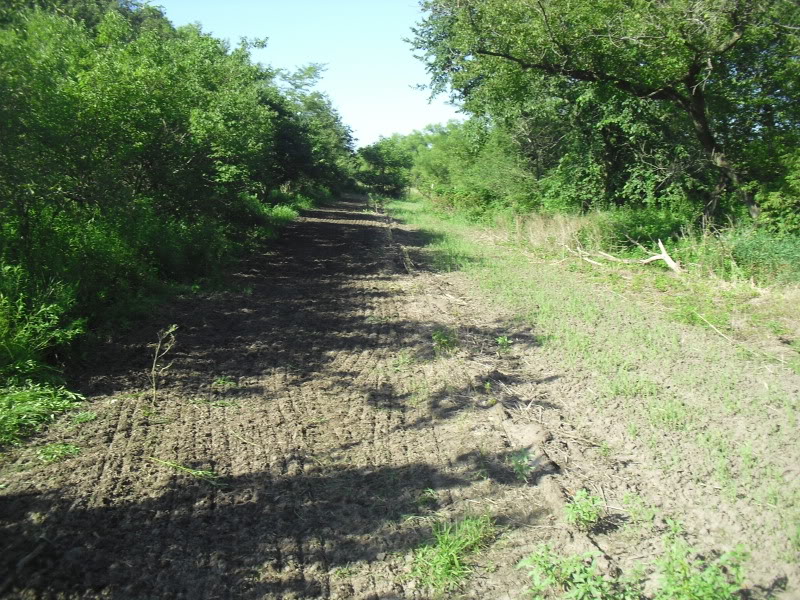dbltree
Super Moderator
I sowed this Northern Sweet Spot mix last July and it was sorely in need of being clipped when I took this pic on June 20th. The clovers had gone to seed but otherwise it looked healthy enough.

I did not notice much chicory remaining, something I find common to all of my clover/chicory plantings because the clover is too aggressive.
The tall grasses are switchgrass that was already there...not High Sugar ryegrass. The HS ryegrass has not proven to be aggressive or spreading like the common ryegrasses we are used to which is somewhat of a relief as I was concerned about that when I planted it.

I mowed it and set up a trail cam so we'll see how it looks in a few weeks.
Deer are still hitting the Alice white clover hard!

I love white clovers because they are sooo easy to manage and such an inexpensive way to provide season long high quality forage.
Remember those thistles? Gone after a couple mowings...haven't sprayed a drop of herbicide on my Alice clover!

Did I mention that white clover is also awesome habitat for turkey broods? The blossoms attract insects and the clover is just the right height to hide poults but allow the hen to keep an eye out for danger!

So you tried planting your clover this spring, fought the mud to get it in and now the weeds are becoming a menace! Try fall planting with winter rye next time and you can skip all the aggravation!

In this area I am just letting the rye mature and wither away while the white clovesrs prosper!

Nary a weed to be found, no herbicide did I need, no mud did I fight and I fed my deer high quality forage within a few weeks of planting last fall without a break!

This is Alice white clover and Alta Swede Mammouth Red Clover planted with winter rye two years ago and deer are hitting this combination hard this summer!


I've been testing some white clovers for Grassland Oregon/Sucraseed and I guess the proof is in the pudding or so they say...

There are many great white clovers on the market that are available for $3.50 to $5 a pound so at 6#'s per acre it would seem unwise for any landowner to not make white clover a part of their habitat program. Look for a clover that fits your program and soils, one that is drought resistant and is dominate enough to keep weeds at bay yet not so tall and heavy that is difficult to manage.
Alice, KopuII, Durana, Patriot, Barblanca are just a few and with a little testing you can find the right one to fit your needs and help hold whitetails on your property year around... :way:

I did not notice much chicory remaining, something I find common to all of my clover/chicory plantings because the clover is too aggressive.
The tall grasses are switchgrass that was already there...not High Sugar ryegrass. The HS ryegrass has not proven to be aggressive or spreading like the common ryegrasses we are used to which is somewhat of a relief as I was concerned about that when I planted it.

I mowed it and set up a trail cam so we'll see how it looks in a few weeks.
Deer are still hitting the Alice white clover hard!

I love white clovers because they are sooo easy to manage and such an inexpensive way to provide season long high quality forage.
Remember those thistles? Gone after a couple mowings...haven't sprayed a drop of herbicide on my Alice clover!

Did I mention that white clover is also awesome habitat for turkey broods? The blossoms attract insects and the clover is just the right height to hide poults but allow the hen to keep an eye out for danger!

So you tried planting your clover this spring, fought the mud to get it in and now the weeds are becoming a menace! Try fall planting with winter rye next time and you can skip all the aggravation!

In this area I am just letting the rye mature and wither away while the white clovesrs prosper!

Nary a weed to be found, no herbicide did I need, no mud did I fight and I fed my deer high quality forage within a few weeks of planting last fall without a break!

This is Alice white clover and Alta Swede Mammouth Red Clover planted with winter rye two years ago and deer are hitting this combination hard this summer!


I've been testing some white clovers for Grassland Oregon/Sucraseed and I guess the proof is in the pudding or so they say...

There are many great white clovers on the market that are available for $3.50 to $5 a pound so at 6#'s per acre it would seem unwise for any landowner to not make white clover a part of their habitat program. Look for a clover that fits your program and soils, one that is drought resistant and is dominate enough to keep weeds at bay yet not so tall and heavy that is difficult to manage.
Alice, KopuII, Durana, Patriot, Barblanca are just a few and with a little testing you can find the right one to fit your needs and help hold whitetails on your property year around... :way:















